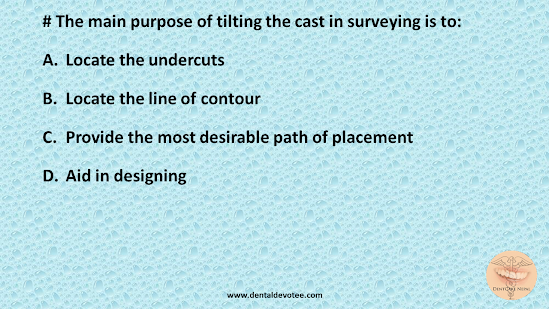# Zero degree cusp teeth are preferred over anatomic teeth:
A. When muscles of mastication is very powerful
B. Diabetic patients
C. Patients with well developed residual ridge
D. Patients with very less retention and stability
The correct answer is D. Patients with very less retention and stability.
Zero degree teeth are defined as, “Artificial posterior teeth having no cusp angles in relation to the horizontal occlusal surfaces” - GPT.
Advantages
• In patients with bruxism non-anatomic teeth decrease the forces acting on the basal tissues.
• Greater range of movements is possible.
• In patients with neuromuscular disorders where accurate jaw relation cannot be recorded, cuspless teeth are preferred.
• In cases with highly resorbed ridge, cuspless teeth are preferred as they do not get locked and displace the denture during lateral movements.
Disadvantages
• Flat occlusal surfaces and artificial contours give an unaesthetic appearance.
• Masticatory efficiency is less.
• Balanced occlusion cannot be obtained.
• Occlusion is in two dimensions, whereas the mandibular movement is in three dimensions.
• Any attempt to correct these teeth by occlusal grinding will decrease their efficiency.
Reference: Nallaswamy, 2nd Edition, Page No 9







